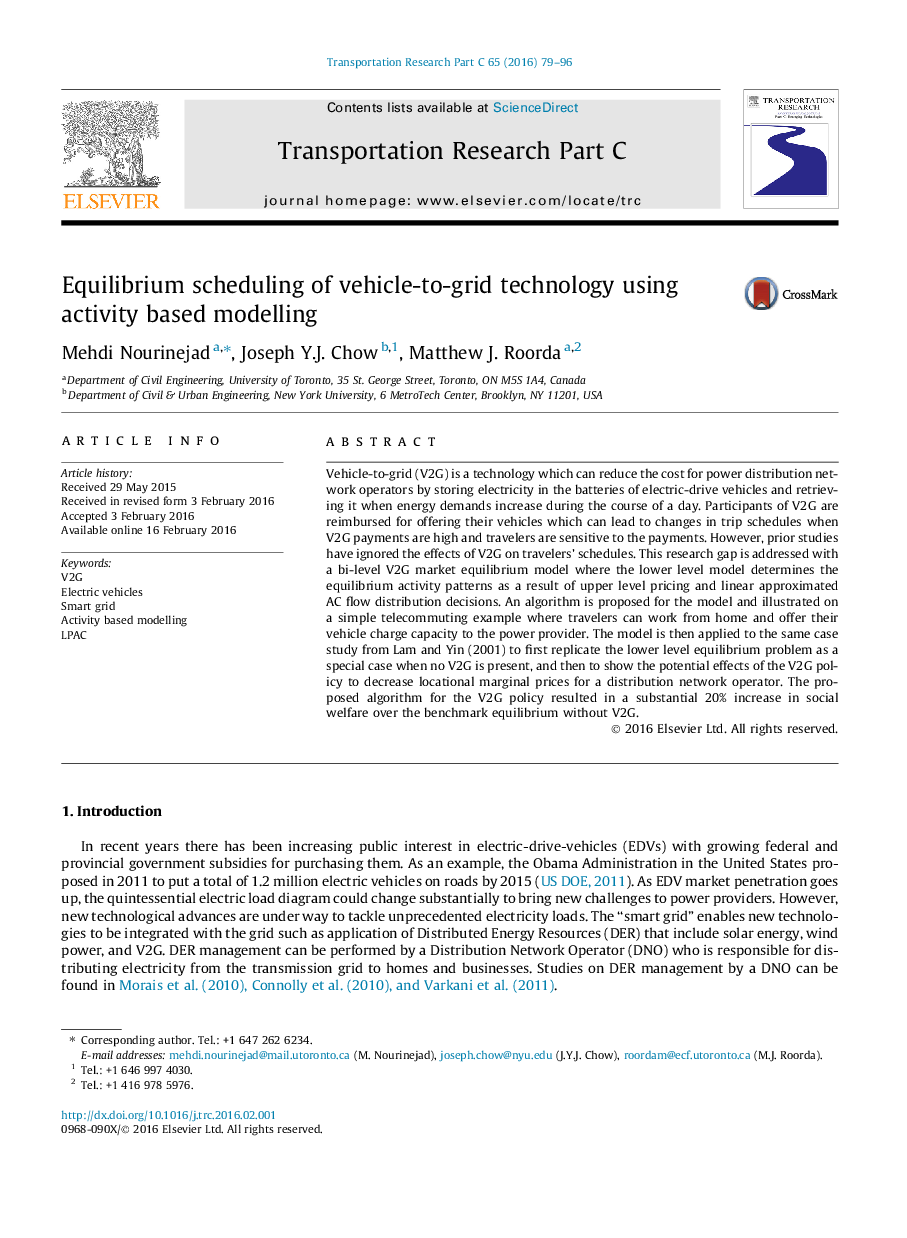| Article ID | Journal | Published Year | Pages | File Type |
|---|---|---|---|---|
| 6936491 | Transportation Research Part C: Emerging Technologies | 2016 | 18 Pages |
Abstract
Vehicle-to-grid (V2G) is a technology which can reduce the cost for power distribution network operators by storing electricity in the batteries of electric-drive vehicles and retrieving it when energy demands increase during the course of a day. Participants of V2G are reimbursed for offering their vehicles which can lead to changes in trip schedules when V2G payments are high and travelers are sensitive to the payments. However, prior studies have ignored the effects of V2G on travelers' schedules. This research gap is addressed with a bi-level V2G market equilibrium model where the lower level model determines the equilibrium activity patterns as a result of upper level pricing and linear approximated AC flow distribution decisions. An algorithm is proposed for the model and illustrated on a simple telecommuting example where travelers can work from home and offer their vehicle charge capacity to the power provider. The model is then applied to the same case study from Lam and Yin (2001) to first replicate the lower level equilibrium problem as a special case when no V2G is present, and then to show the potential effects of the V2G policy to decrease locational marginal prices for a distribution network operator. The proposed algorithm for the V2G policy resulted in a substantial 20% increase in social welfare over the benchmark equilibrium without V2G.
Keywords
Related Topics
Physical Sciences and Engineering
Computer Science
Computer Science Applications
Authors
Mehdi Nourinejad, Joseph Y.J. Chow, Matthew J. Roorda,
